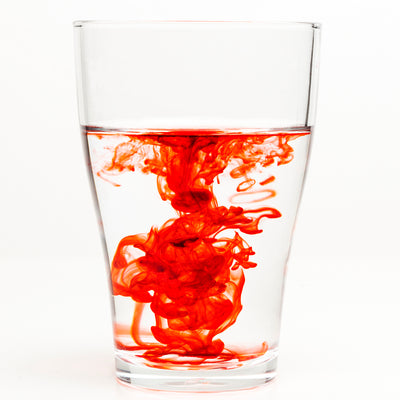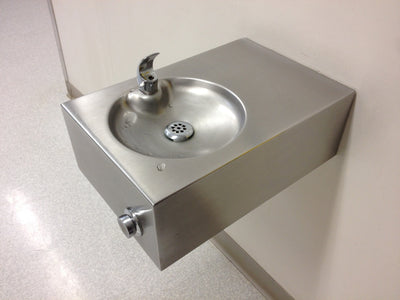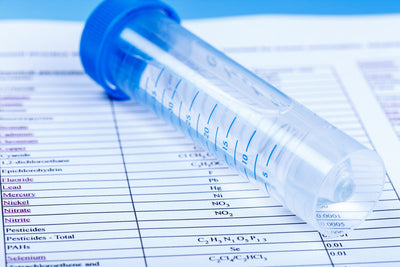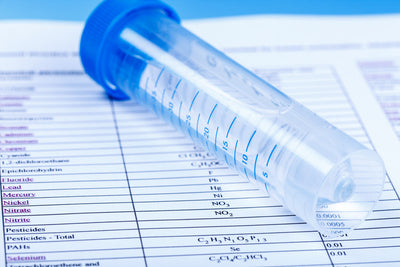Rebecca Labranche | Laboratory Director, A&L Laboratory
How Is Drinking Water Regulated?
The Environmental Protection Agency (EPA) sets regulatory limits for over 90 contaminants in water provided by public water systems. The EPA sets these limits in accordance with the Safe Drinking Water Act to protect public health in the communities that are using this water. The EPA limits are divided into two main categories. National Primary Drinking Water Regulations are legally enforceable standards that apply to public water systems. Primary standards protect public health by limiting the levels of contaminants in drinking water that negatively affect human health. National Secondary Drinking Water Regulations are non-enforceable guidelines regulating contaminants that may cause cosmetic effects (such as skin or tooth discoloration) or aesthetic effects (such as taste, odor, or color) in drinking water. EPA recommends secondary standards for water systems but does not require systems to comply. In addition to the federal EPA standards, The Safe Drinking Water Act (SDWA) gives individual states the opportunity to establish their own drinking water standards if they are not more lenient than those set by the EPA's national standards.
So how do these federal and state regulations affect private well-owners? These same limits and guidelines used for public water are also adopted by most institutions and lenders for home water testing as a way to determine if the property provides potable, safe water. When a home goes up for sale, if the buyer is financing, they will likely be required to test the water. While lenders may be concerned about a potable water source in order to protect their investment, there are no official rules or regulations for determining potability of private wells. Many states and towns do not even require sampling of private wells after installation. It is the responsibility of the homeowner to maintain their well and water supply.
How Often Should Home Water Testing Be Conducted?
Private well water should be tested a minimum of once per year. Drinking water supplies obtained from shallow dug wells and surface water sources should be tested more frequently as they are more susceptible to contamination. Annual testing of both dug and drilled wells should check for the most common contaminants which are bacteria, nitrates and nitrites. Even if your water has consistently been safe to drink in the past, these parameters could change without you knowing, and affect the safety of your water. New drilled wells should be tested with a more comprehensive water test which includes bacteria, nitrates, nitrites, metals, minerals and radon. This test identifies many common primary and secondary contaminants typically found in the bedrock surrounding the well. This comprehensive test should be repeated every 3 – 5 years to ensure the well is still providing safe water.
What Are The Most Common Types Of Drinking Water Contaminants?
Drinking water contaminants can be divided into several categories: Inorganic Chemicals, Organic Chemicals, Radionuclides and Microorganisms. Testing for every possible analyte would be prohibitively expensive but we have put together a comprehensive test package which covers common problems found in our area.
|
Total Coliform
|
E.coli
|
pH
|
Nitrate-N
|
Nitrite-N
|
|
Copper
|
Iron
|
Manganese
|
Lead
|
Arsenic
|
|
Hardness
|
Magnesium
|
Calcium
|
Chloride
|
Fluoride
|
|
Uranium
|
Sodium
|
Radon
|
|
|
Laboratories throughout the United States will offer similar packages based on the geology in their area.
What Is The Process For Analyzing Drinking Water?
The process of analyzing drinking water varies by laboratory and their methods used. However, the basic premise is the same for all of them. The first step is to obtain a water test kit from the certified drinking water laboratory that you intend to use for the analysis. Home water testing kits are specific to each laboratory and their methods so it is important not to use another laboratory’s bottles. These test kits come with all the information that is needed to collect the sample and get it back to the laboratory in the required time frame. The sampling instructions are usually step by step and easy to follow. Once the water is received by the laboratory it will be analyzed for the requested parameters and a report will be generated and sent back to the client. The typical turn-a-round time for a comprehensive water test is 2-3 business days.
Using a certified laboratory is very important. They are monitored by their state and undergo periodic inspections to ensure that they are producing the highest quality data. During these inspections their instruments, standard operating procedures, lab technicians, quality control documentation and reporting procedures are reviewed and evaluated. If anything is found to be out of compliance certification for the laboratory can be revoked. In addition to inspections, they also have to complete proficiency tests for each method they conduct to prove that they can perform the method properly and obtain results within the specified limits.
What Are The Risks Associated With Consuming And/Or Using Contaminated Water?
The risks vary greatly depending on which contaminants you have in your water. Common health effects include gastrointestinal illness, reproductive problems, neurological disorders and cancer. These health problems pose a greater threat to young children, pregnant women, the elderly, and people with compromised immune systems. The health effects of drinking contaminated water can range from no physical impact to severe illness or even death.
Some of the effects of drinking contaminated water are known almost immediately. Immediate health related issues generally stem from contamination by pathogens such as total coliform and E.coli. Symptoms include gastrointestinal and stomach illnesses such as nausea, vomiting, cramps, and diarrhea.
Other contaminants pose health effects that may not be observed for many years. Some of the most common ones are:
Arsenic in water occurs naturally as well as from industrial activities. Studies have shown that chronic or repeated ingestion of water with arsenic over a person’s lifetime is associated with increased risk of cancer (of the skin, bladder, lung, kidney, nasal passages, liver or prostate) and non-cancerous effects (diabetes, cardiovascular, immunological and neurological disorders).
Lead can occur due to corrosion of lead containing household plumbing and by industrial pollution. Major toxic effects include anemia, neurological dysfunction/damage and renal impairment.
Uranium is a tasteless, colorless, odorless contaminant. Drinking water with uranium amounts exceeding 30ug/L can lead to increased cancer risk, liver damage, or both.
Copper has both long term and short term effects. Some people with short term exposure, experience gastrointestinal distress, and with long-term exposure may experience liver or kidney damage. It is typically introduced into the water from household plumbing systems.
Fluoride has been shown to reduce tooth decay in children's teeth if they receive an adequate level. The optimal concentration, as recommended by CDC is approximately 1.1 mg/L. In the range of 2.0-4.0 mg/L of fluoride, staining of tooth enamel is possible. Above 4.0 mg/L, studies have shown the possibility of skeletal fluorosis, as well as the staining of teeth.
Radon is the second leading cause of lung cancer. High levels of radon gas occur naturally in Maine soil and water, and can move up into a house from the ground. The house then traps the radon in the air inside. Radon gas can also dissolve into well water, which is then released into the air when you use the water.
What Should I Do If The Laboratory Finds Something In My Water?
If tests on your water indicate problems, the next step is to determine what type of system you need to treat the water. This can be a difficult decision because there is a wide variety of water treatment devices on the market today. Water purifiers range from relatively low-cost, simple filter devices for a kitchen faucet to more expensive, sophisticated systems that treat water from its point of entry into a home. Keep in mind, no one water treatment device can solve every problem.
Rebecca Labranche is the Laboratory Director for A & L Laboratory. A & L Laboratory specializes in drinking water analysis for both public systems and private wells throughout the State of Maine.
Editor's Note: Since this article was first written, more drinking water contaminants have gained attention in the news.These include Per and Polyfluoroalkyl Substances (PFAS), which have recently become Federally regulated in drinking water. If you want to get your water tested and are unsure of what to request, feel free to contact our Water Nerds at hello@hydroviv.com. We can discuss your water concerns and help you prioritize which contaminants to test for.
Other Articles We Think You'll Love:
Testing your home's water for lead? Read this first!Why a TDS meter doesn't tell you much about your home's water qualityWhy does EPA allow toxic chemicals in water?











